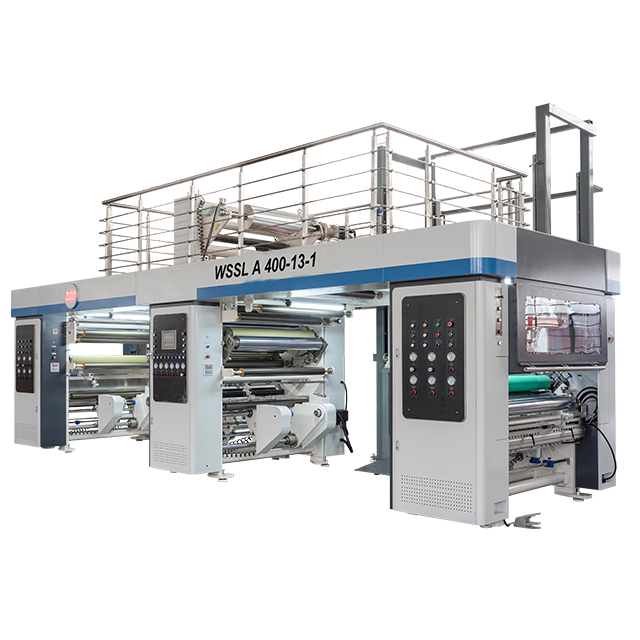Embracing the realm of Solventless lamination entails delving into a verdant realm of innovation. At its core lies a dual-layer comprehension: the procedural technique and the encompassing process system. The dynamic interplay of these facets often engenders misconceptions during discussions and promotions.
I. Solventless lamination Process Technique and System
In essence, the Solventless lamination process technique encompasses the utilization of polyurethane adhesives to bond substrates, giving rise to novel, functional materials.
Meanwhile, the Solventless lamination process system entails an intricate interconnection of elements—ranging from equipment, lamination substrates, adhesives, operators, work environments, to procedural guidelines—comprising an organic whole intertwined with other systems.
It's essential to grasp that the Solventless lamination process system embodies the entirety of people, machinery, materials, methods, and environments. Furthermore, it intricately intertwines with other company process systems in specific enterprises, influencing quality control, organizational synchronization, technological advancement, and relationships with suppliers and users.

II. The Solventless lamination Process System
Applying systems theory and philosophical analysis to the Solventless lamination process system unveils its defining traits, positioning, constituent elements, and avenues of control.
1. It's more than just a technique—it's a multi-faceted system.
Quality, versatility, efficiency, and cost metrics of Solventless lamination technology are products of multifarious elements within the lamination system.
1) Elements impact the lamination's overall effectiveness to varying degrees. Equipment, substrates, adhesives, operators, work environments, and procedural guidelines all play distinct roles, their importance evolving across different times, applications, and enterprises.
lamination equipment serves as the foundational platform, enabling procedural implementation and fostering process enhancements. Other factors influence the system in diverse ways, sometimes exerting even more significant impact, especially adhesives. Take, for instance, the lamination environment, which encompasses both the lamination process and subsequent curing environments—essentially, a blend of pre- and post-process conditions.
Certain substrate types and qualities distinctly affect Solventless lamination feasibility, and some become bottlenecks in the application of this technique. Often, discussions about the scope and characteristics of Solventless laminations presuppose specific lamination substrates and application scenarios.
2) Different enterprises adapt to the process differently, closely tied to market positioning, client demographics, product structure, and technical management proficiency.
2. Solventless laminations are closely entwined with preceding and succeeding processes, exerting mutual influence.
From a utilization perspective, Solventless laminations are never isolated or singular processes.
In the common perception, Solventless laminations involve a straightforward procedure of using Solventless lamination machinery, applying dual-component or single-component adhesives, laminating, and subsequently curing. However, in reality, they closely interact with printing, slitting, and bag-making processes. These interrelations and constraints constitute an organic whole, impacting product quality, adaptability, and overall production efficiency.
1) Solventless laminations are directly affected by print substrate quality and impose corresponding requirements. For instance, ink type, ink adhesion, solvent residue, ink particle size, winding evenness, and tension all significantly influence the feasibility and applicability of laminations. Conversely, specific lamination quality necessitates specific printing quality, making stable and appropriate printing quality a prerequisite for successful Solventless lamination procedures. For high-functionality lamination products, print quality might even be the decisive factor in the success of Solventless laminations.
2) Solventless curing conditions and quality are closely intertwined with slitting or bag-making processes. Different purposes and product types yield distinct effects and requirements for slitting and bag-making. For example, lamination products leaving the factory as rolls or formed bags exhibit varying demands on curing and slitting. Roll products require less stringent curing and slitting, while bag-making mandates thorough lamination film curing; thus, broadly discussing the pros and cons of Solventless laminations often lacks meaning!
3. Solventless laminations are a subsystem within the larger packaging enterprise system.
lamination packaging enterprises inherently constitute complex macrocosms, containing multiple subsystems.
Within this framework, the lamination process system is just one facet, with Solventless laminations possibly constituting a smaller subsystem within the entire lamination process system.
Diverse enterprises with varied needs, resources, and outlooks affect the importance, success rate, and effectiveness of Solventless laminations. Thus, different evaluations of this technique among various companies are commonplace.
For enterprises adopting Solventless laminations, its introduction and substitution of older techniques aren't isolated or instantaneous occurrences. Rather, they require comprehensive planning and multi-faceted coordination, constituting a systematic engineering endeavor.
III. Solventless lamination Ecosystem
1. Solventless lamination suppliers form a system.
Primary sources of Solventless lamination process technology are suppliers, effectively forming an interconnected whole.
From process exploration and trial phases to widespread promotion, suppliers are the foremost technological innovators, contributing to solutions alongside equipment, adhesives, and other materials suppliers. Hence, the primary relationship between suppliers should be one of cooperation, not competition.
2. Suppliers, packaging plants, and users constitute an ecosystem.
Suppliers provide the technological basis for lamination packaging plants, while these plants offer the application conditions and improvement impetus for equipment processes. In turn, end-users (such as food and pharmaceutical manufacturers) leverage the economic and environmental benefits of the new process, thereby creating market conditions for technology dissemination. As such, suppliers, packaging plants, and users form an ecosystem within the Solventless lamination industry chain.
In summation, Solventless laminations mustn't be seen as a single factor, solitary process, or even an isolated technological endeavor. Instead, they should be approached as a process system and, ultimately, developed into an evolving ecosystem.











